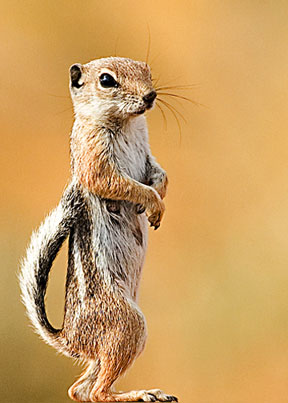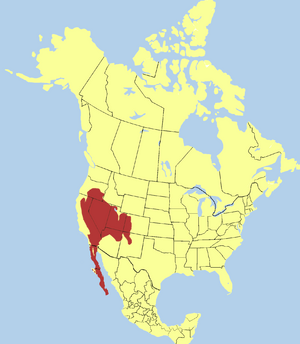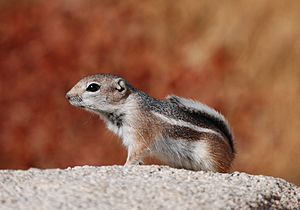White-tailed antelope squirrel facts for kids
Quick facts for kids White-tailed antelope squirrel |
|
|---|---|
 |
|
| White-tailed antelope squirrel in Southern Utah | |
| Conservation status | |
| Scientific classification | |
| Genus: |
Ammospermophilus
|
| Species: |
leucurus
|
 |
|
| Distribution map of the white-tailed antelope squirrel—Ammospermophilus leucurus | |
The white-tailed antelope squirrel (Ammospermophilus leucurus) is a type of ground squirrel. These busy little animals are active during the day, which means they are diurnal. You can find them living in dry, desert-like areas. They live in the southwestern United States and the Baja California Peninsula in northwestern Mexico.
Contents
Where Does This Squirrel Live?
The white-tailed antelope squirrel lives in a wide area. Its home stretches from southwestern Oregon down to New Mexico. From east to west, it lives from western Colorado all the way to Baja California, Mexico.

Squirrel Life: Home & Habits
Each white-tailed antelope squirrel has a special area it calls its "home range." This area is about 14.9 acres big. However, they only use about 4 acres for their daily activities. The number of squirrels in one area can change a lot. Sometimes there are many, and other times there are fewer. More squirrels are usually seen in the autumn than in late spring.
What Do White-Tailed Antelope Squirrels Eat?
These squirrels are omnivores. This means they eat both plants and animals. Their main foods are leaves and seeds. They also enjoy eating insects and other small creatures. Sometimes, they even eat small lizards or rodents.
Who Eats White-Tailed Antelope Squirrels?
Even though these squirrels sometimes hunt, they are also food for many other animals. Large birds like hawks and eagles hunt them. Different types of wild dogs, like coyotes, also prey on them. And of course, snakes are a common danger for these squirrels.
How Do They Act?
Antelope squirrels are most active when the day is cooler. They try to avoid the hottest part of the afternoon. Even though they live in hot deserts, they are active during the day. Their bodies are good at handling the heat. Being active during the day might also help them avoid predators that hunt at night. These squirrels have a natural "body clock" called a circadian rhythm. This clock helps them know when to be active and when to rest.
How Do They Have Babies?
When Do Babies Arrive?
Female white-tailed antelope squirrels are ready to have babies in early spring. Male squirrels are also ready to reproduce at this time. These squirrels can start having babies when they are only one year old. They usually have one large group of babies, called a litter, each year.
Babies in Different Places
Where a squirrel lives can affect how many babies it has and how long its breeding season lasts. For example, in Oregon, which is in the northern part of their range, the breeding season is shorter. There, a mother squirrel usually has about 9 babies in a litter. But in Baja California, which is in the southern part of their range, the breeding season lasts for half the year. In this warmer area, a mother squirrel usually has about 6 babies in a litter.



